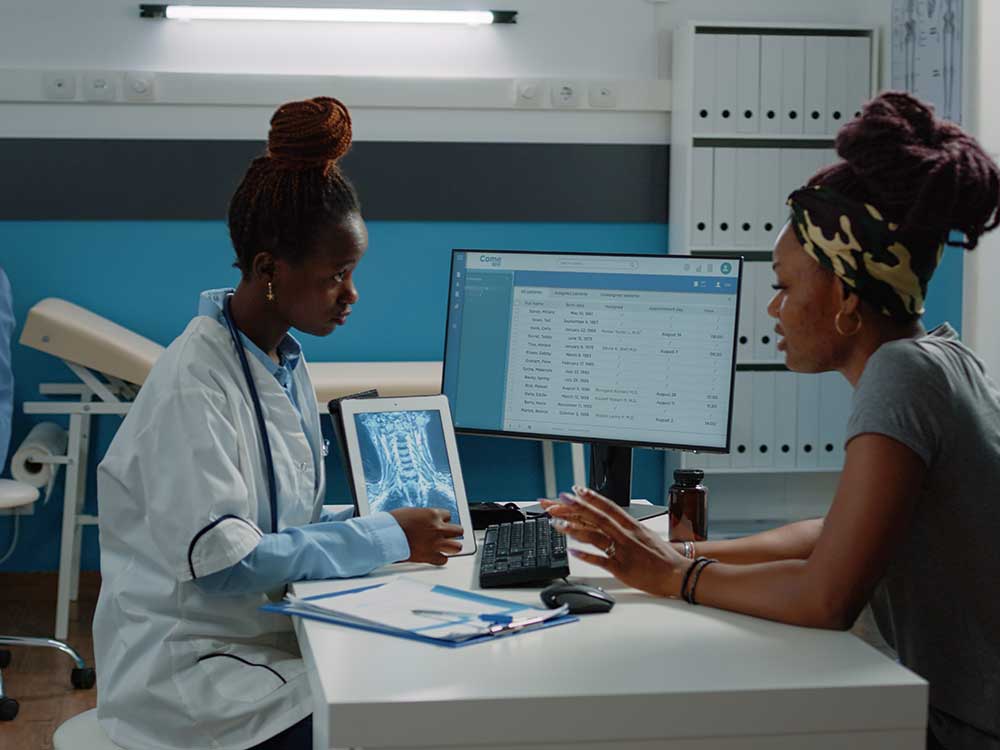Just how to Begin an Effective Occupation in Medical Administration: A Newbie's Guide
Just how to Begin an Effective Occupation in Medical Administration: A Newbie's Guide
Blog Article
Best Practices in Medical Administration for Improving Effectiveness and Minimizing Costs
In the ever-evolving landscape of health care, the pursuit of finest practices in medical administration is paramount for boosting performance and curbing costs. By incorporating innovative innovations such as digital wellness records and telemedicine, healthcare carriers can improve procedures and enhance individual care.
Leveraging Advanced Innovation
In today's rapidly progressing health care landscape, leveraging sophisticated technology is no longer optional but important for reliable medical administration. The assimilation of electronic services into medical care systems has actually changed the means centers operate, simplifying procedures and improving patient care. Electronic Wellness Records (EHRs) are critical, supplying extensive client data that can be accessed promptly by accredited workers, hence decreasing redundancy and decreasing mistakes. By centralizing client info, EHRs get rid of the need for difficult documentation and promote seamless communication amongst health care providers.
Telemedicine is another technical development that has reinvented person interaction. It offers ease for both individuals and healthcare specialists by making it possible for remote assessments, which can reduce the requirement for in-person check outs and maximize consultation scheduling. Additionally, telehealth platforms can prolong medical care access to country or underserved locations, connecting voids in care delivery.
Moreover, the use of Expert system (AI) and machine understanding is coming to be significantly prevalent in anticipating analytics, enabling very early discovery of prospective health issues and more informed decision-making. These technologies, when incorporated effectively, can boost analysis precision and individualize person therapy strategies, eventually leading to enhanced healthcare results and functional efficiency.
Optimizing Source Allowance
By purposefully taking care of sources such as personnel, tools, and financial resources, health care centers can dramatically boost their operational performance, boost patient outcomes, and lower unnecessary expenses. The initial step in optimizing source appropriation includes carrying out a comprehensive evaluation of present possessions and identifying areas where resources might be underutilized or overextended.
Prioritizing resource allotment based on patient needs and solution needs is crucial. Applying adaptable staffing designs can likewise maximize labor sources by adjusting employees allotment in action to changing client volumes.
Funds must be meticulously checked and allocated with tactical insight to sustain both temporary functional needs and long-lasting institutional goals. This includes investing in training programs that enhance staff proficiencies and taking on energy-efficient methods that minimize functional prices (medical administration). Eventually, an optimized source allotment approach promotes a lasting health care environment that is responsive, reliable, and monetarily sensible
Streamlining Workflow Processes
When healthcare centers goal to enhance operational performance, simplifying workflow procedures becomes a pivotal focus. Effective workflows reduce redundancy, get rid of unnecessary steps, and improve sychronisation amongst medical care experts. This strategy not just speeds up solution distribution yet also boosts the top quality of individual treatment.

Following, innovation assimilation plays a significant role in streamlining workflows. Applying electronic health and wellness records (EHRs) and electronic medical professional order entrance (CPOE) systems decreases documents, decreases human mistake, and makes sure information is obtainable to all appropriate employees. In addition, leveraging telemedicine systems can enhance person consultations and follow-ups, minimizing the pressure on physical framework.

Ultimately, structured workflows result in set you back decreases and boosted individual fulfillment, promoting an extra lasting health care setting.
Enhancing Information Management
Building upon structured operations, maximizing data administration ends up being a vital component ahead of time healthcare management. over at this website Efficient information management systems are crucial for preserving precise person documents, enhancing decision-making, and ensuring conformity with governing requirements. By executing durable information administration services, medical care facilities can improve the quality of patient treatment while concurrently reducing operational expenses.
One trick facet of boosting information monitoring is the assimilation of innovative electronic health and wellness record (EHR) systems. These systems promote the smooth exchange of client info across various divisions, decreasing duplication of tests and minimizing errors. A well-designed EHR system sustains data analytics, making it possible for doctor to determine patterns and make notified decisions concerning individual care.
Furthermore, guarding person information is paramount. Embracing comprehensive cybersecurity actions, consisting of file encryption and regular audits, guarantees the integrity and discretion of delicate details. This not only safeguards people but also maintains the establishment's track record.
Investing in team training is an additional crucial element. Educating medical care professionals on information monitoring practices enhances their capacity to efficiently make use of innovation, bring about boosted client results. Finally, improving data monitoring via sophisticated technology and comprehensive training is important for attaining effectiveness and price reduction in medical management.
Fostering Collaborative Communication
An essential component ahead of time clinical management is promoting collective interaction among healthcare experts. Reliable interaction is vital for making sure smooth individual care, maximizing therapy end results, and reducing mistakes. By motivating open discussion and control across multidisciplinary teams, healthcare companies can improve their operational efficiency and reduce unneeded prices.
Central to this method is the combination of communication technologies such as electronic wellness documents (EHRs) and safe and secure messaging platforms, which help with the fast exchange of essential client details. These tools allow doctor to accessibility and share data in actual time, making certain that all staff member are informed and aligned in their decision-making processes. Routine group meetings and interdisciplinary rounds can better advertise a additional reading society of collaboration and liability.
Educating programs concentrated on boosting interaction skills are additionally vital. These more programs can aid staff create the capability to convey info plainly and listen actively, hence decreasing misunderstandings and cultivating an encouraging work environment. Furthermore, taking on standard communication protocols, such as SBAR (Scenario, Background, Analysis, Referral), can streamline the exchange of details, making sure that critical details are conveyed succinctly and properly. Inevitably, cultivating collective communication causes enhanced health care delivery and expense savings (medical administration).

Final Thought
Incorporating innovative modern technology, such as digital health records and telemedicine, along with optimized source allocation and structured operations procedures, is important for boosting performance in medical management. Efficient data administration and promoting collaborative communication amongst medical care groups are essential for decreasing redundancies and improving treatment high quality. By prioritizing preventative care and taking part in high quality improvement initiatives, medical care companies can attain substantial cost financial savings and improved patient end results, thus guaranteeing lasting medical care delivery in a significantly intricate atmosphere.
Report this page